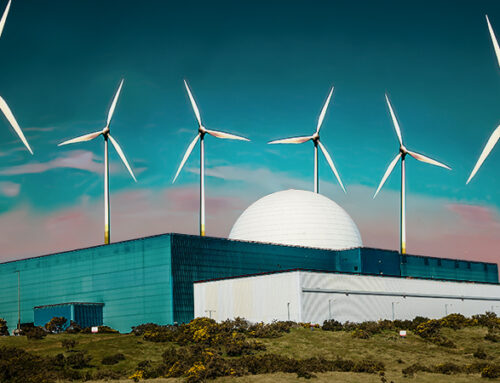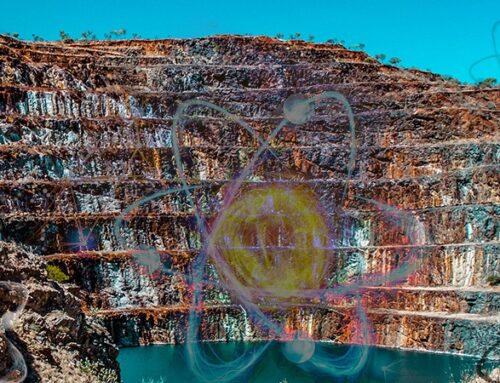EDF announced this week that it is bringing forward the closure dates of two of its nuclear power stations – Heysham 2 in Lancashire, and Tornesss in East Lothian, are now expected to close in 31 March 2028 instead of 2030.
Accelerating the closure of the aging AGR fleet
As I outlined in my previous post, there have been concerns that these power stations may need to close earlier than expected after consideration of the problems discovered at Hinkley Point B and Hunterston B which led to their early closure.
Hinkley Point B (“HPB”) and Hunterston B were the first two Advanced Gas-Cooled Reactors (“AGRs”) to open in 1976 are both closing within the next year – one unit at Hunterston has already begun de-fuelling, with the other unit set to close in January, while HPB will close no later than July 2022. The closures have been prompted by the discovery of cracking in their graphite cores which caused prolonged safety outages.
Both Heysham 2 and Torness have already generated almost as much power in running for 33 years as Hinkley Point B and Hunterston did in 45 years, which is important because it is the radiation levels generated running the plants that led to the cracking, meaning that either plant could start to develop problematic cracks earlier than expected.
Once cracks emerge, they will have only three or four years of safe running left. Last year a report by the Office for Nuclear Regulation found that cracking at Torness could begin to emerge in mid-2022, which could suggest that the closure date would need to be brought forward again. Campaigners assert that design differences between Torness and Hunterston B make Torness more vulnerable to the issue.

This is all bad news for the nuclear power in Britain, and new nuclear cannot reasonably be expected to fill the gap.
Taishan problems might derail European EPR projects
Hinkley Point C is currently expected to open in June 2026, but recent issues at Taishan 1 in China suggest there might be a design flaw with the European Pressurised Water Reactor (“EPR”) technology deployed at both sites. Since I wrote my post, a reader drew my attention to this article which provides more information about the whistle-blower’s disclosures.
Apparently, the whistle-blower, who works at a French nuclear power company, has claimed that more than 70 fuel rods were damaged, significantly more than the number acknowledged by China’s Ministry of Ecology and Environment in June, when it stated that “about five” rods were affected.
The whistle blower has suggested that the damage could be due to a design flaw, relating to “a not-very-successful hydraulic system at the bottom of the vessel which gives an uneven distribution of power in the assemblies. A transverse current is created in the core and causes the assemblies to move, especially those at the periphery.” These movements, also characterised as “vibrations and shocks” damaged the fuel rods.
Following the whistle-blower’s claims, the Commission for Independent Research and Information about Radiation (“CRIIRAD”), a Paris-based NGO established in 1986 to monitor radioactive leaks in the wake of the Chernobyl disaster sent an open letter to the French nuclear regulator, ASN, detailing the concerns and how they might relate to other EPRs such as the flagship project at Flamanville in France.
Following pressure from Greenpeace and others, ASN announced last week that the EPR at Flamanville would not be authorised to open until there is a satisfactory explanation of the situation at Taishan.
“There is still a lot of work to be done on the [Flamanville] site before start-up operations, and feedback from the experience of the Taishan 1 EPR deviation must take place,”
– Julien Collet, deputy general manager at ASN
Faults remove four French nuclear reactors from service
There has been further bad news for EDF after regular maintenance at its Civaux plant in western France uncovered defects in pipes in the safety system at the reactor which has led to the closure of four reactors, two at Civaux and two at Chooz near the Belgian border. The faults were detected close to welds on the safety injection-system circuit, which are likely to have been caused by corrosion.
The Civaux reactors are due to re-open on 31 March and 30 April, while the Chooz reactors should return to service on 23 January. The loss of these four reactors in the middle of winter is creating concerns over French capacity margins and increases the likelihood of imports from GB, although capacity is currently limited by outages on IFA 1. European power prices have surged as a result.






Interesting update on the Taishan EPR, and implications for Hinkley Point C. EDF have the “new build” project very compartmentalised and I have no inside knowledge. The new information seems to confirm the problem is nothing at all to do with the reactor pressure vessel (as I have suggested before), but rather with the reactor internals which are, by comparison, more accessible for design revision particularly for plant under construction. Ironically, there are echoes here of early problems at Hinkley Point B, where serious vibration was found in fuel stringers during the initial Combined Engineering Tests (where gas is circulated at full flow, but with control rods fully inserted so that the reactor is at zero power). In that case, the problems were in the gags that can be individually adjusted to optimise the output of each fuel channel. These are at the top of the fuel stringer, and are removable for servicing and re-use with new fuel. The problem was eliminated by redesign. In this case the issue appears to be at the bottom of the core, perhaps in the support structures or possibly associated with the bottom of the fuel element. In either case, there will be a design solution. Obviously, this will require careful development and testing, and it may be more difficult to implement in the plant that has been in service. It may add delay and cost to Hinkley Point C, but not necessarily. Problems always arise in evolving technologies. As steam engines developed, there were an increasing number of boiler explosions until pressure vessel legislation mandated design features and inspection. The Comet crashes were the price we paid for being first with the technology. It’s no accident that airliners now all look very much the same.
t is good to see real world engineering issues discussed.
Even virtual projects have problems as seen with the electricity market and regulation design. Large engineering projects particularly prototypes always have issues to overcome. The British designed and built AGRs all had teething problems and are now unsurprisingly running into ageing difficulties. After 50 years of successfully generating low carbon electricity and at their peak enabling nuclear to produce over 20% of GB electricity this should be counted as a success that needs to be repeated.
As you say new nuclear will not fill the gap but neither can intermittent wind and solar. Only new fossil fuelled generation can fill the gap in the short to medium term. This is not so much bad news for nuclear in Britain but very bad news for a secure electricity supply and our aim for a net zero future.
Hi all……today we learn of a £23BN shutdown bill for our aging nuclear fleet over the next 6 years.
This falls far short of decommissioning/dismantling, the former translates to lots more £BN’s, whilst the latter…..never IMO.
Heysham 1 reactor building 250ft high, 30ft thick walls of solid contaminated reinforced concrete; no way.
Heysham 2 reactor building, huge also never likely to be dismantled.
What a price to pay, massive CAPX spend & 50 years of low carbon electricity……was it worth it ?
Theoretically:
Applying similar to a group of tidal barrage schemes after 120 years of delivering green electricity.
We are left with toll free carriageways, intertidal lakes, flood control means.
Just needed courage/forward thinking & fair allocation of the £BN’s to develop at scale 20 years ago.
Slightly off topic with apologies:
I was fortunate to come in contact with a civil engineer in the 1960’s working on Severn Barrage feasibility study. He had access to historical records which included an interesting reference to German intentions had they successfully occupied Britain. A list contained 20 primary objectives, top 6/7 political, but included was a Severn tidal barrage scheme to generate electricity on a massive scale.
Barry Wright, Lancashire.